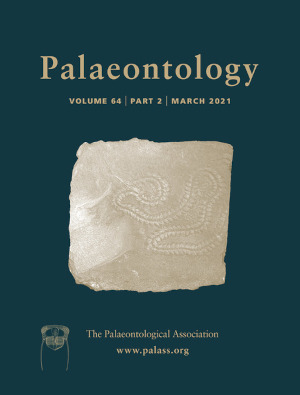Reg. Charity No. 1168330

Arthropods other than trilobites or bradoriids constitute a major component of many Cambrian Burgess-Shale-type Lagerstätten. Owing to their scarcity in other less well-preserved deposits, they are generally regarded as lightly sclerotized but non-mineralized. Here we show that Chuandianella ovata, one of the typical lightly sclerotized arthropods from the Chengjiang biota, reinforced its carapace with phosphatic mineralization. Multiple methods reveal a pitted microstructure and organophosphatic composition of the carapace. Nanogranules of amorphous calcium phosphate (ACP) on the fossil carapace are comparable to those of recent crustacean microstructures, implying that arthropods may have a conserved mechanism of phosphatic mineralization since the Cambrian. The fossil record indicates that the mineralization of ecdysozoans, preceded by the mineralization of lophotrochozoans in the Terreneuvian (~541–521 Ma), appeared in Cambrian Stage 3 (~521–514 Ma) and surpassed the range of living counterparts in phylogenetic coverage. This phenomenon strengthens the view that biomineralization has evolved multiple times independently within the Metazoa. The sudden appearance of mineralized skeletons in the early history of metazoan evolution is frequently attributed to external environment drivers. However, this viewpoint cannot explain the minerology and appearance time of metazoan lineages with mineralized hard parts during the Cambrian explosion.
AcknowledgementsWe are grateful to R.R. Gaines, S. Thomas, T.-Y. Park, and an anonymous reviewer for constructive comments on various versions of the manuscript. This work was supported by National Natural Science Foundation of China (41890845, 41621003, 41772011, 41930139), National Key Research and Development Program (2017YFC0603101), 111 Project (D17013), and Key Scientific and Technological Innovation Team Project in Shaanxi Province.
XLZ designed the research and CL performed analyses. XLZ and CL interpreted the data with input from DJF. CL prepared the first draft which was edited by XLZ.